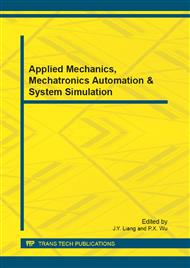p.1136
p.1141
p.1147
p.1152
p.1157
p.1162
p.1167
p.1174
p.1179
Design of Class D Amplifiers Using Zero Crossing Auto Gain Control
Abstract:
This paper proposes a method to control the gain of an amplifier. A 6-bit digital signal is used to control the gain of the amplifier by adjusting the resistance of a potentiometer. The change of the digital signal is allowed to change the gain of the amplifier only if the input signal of the amplifier crosses alternating current (AC) zero. The gain of the amplifier could be reduced or restored, which is based on whether the output signal of the amplifier exceeds a predetermined value or not. The method is verified in a class D amplifier. Road test shows that the method may eliminate the glitch caused by gain change, and the clamp caused by a too large gain.
Info:
Periodical:
Pages:
1157-1161
Citation:
Online since:
September 2012
Authors:
Keywords:
Price:
Сopyright:
© 2012 Trans Tech Publications Ltd. All Rights Reserved
Share:
Citation:


